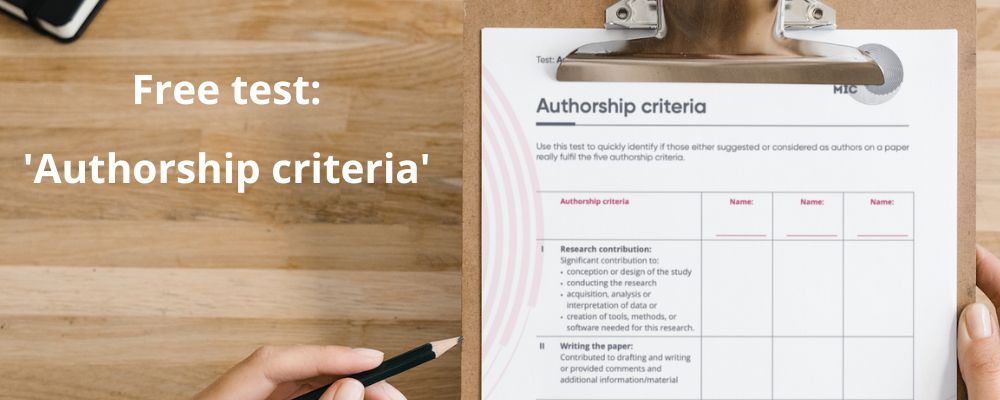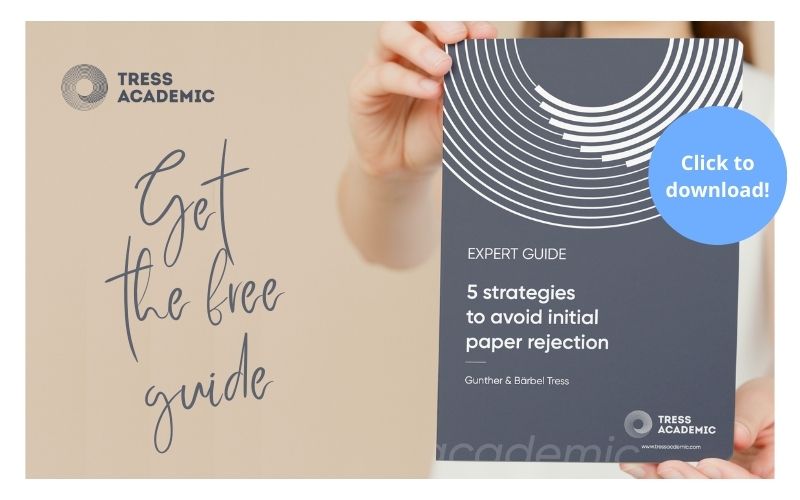Not sure whom to include as (co-)author on a journal paper? Don’t know what defines authorship on a paper? Many rumors and reasons why someone should be an author on a paper seem to go around. Let’s get rid of the myths, and instead look at the actual clear criteria and rules frequently applied to journals and enforced by academic communities regarding co-authorship.
“To be, or not to be … an author on a journal paper, that is the question!”
Sure, Hamlet is bemoaning the pain and unfairness of life in Shakespeare’s play, while being an author on a paper is not a question of life and death, but it is a crucial one, particularly at the beginning of a scientific career!
Is it fair or correct to list some names as co-authors on your paper if you feel they haven’t substantially contributed? Is it too much to ask for co-authorship if you feel your contribution to a piece of research was significant? Can authorship be denied if you contributed to the research? Do I have to include everybody on my team as authors? If you’re unsure about the answers to questions like these, keep reading!
Whether to be an author on a paper or not is an essential question. It determines your role in a research project, within the research team, it adds transparency to the research and publishing process, and it is about getting credit and acknowledgment for the work you’ve done. Published papers are important milestones in research projects and essential bricks in building a career (for ideas on why it is helpful to publish in journals see blog post #13: Writing journal papers: Pros and cons).
The equation “The author of a paper = the writer of the paper” doesn’t always add-up, and doesn’t include all facets of the authorship equation. Traditionally, guidelines and principles of what constitutes authorship can vary across academic disciplines, institutes, journals, and cultures. Sometimes, authorship is even awarded due to the hierarchical status of a person, or for political reasons—an ethically questionable practice. This variety of rules and conventions can be confusing if you’re starting out in a field, or if you’re moving across fields, institutes, or countries. When the rules at one institution are different from those of another, it makes it very hard to compare the merits achieved at both.
To end this confusion, professional academic bodies and organisations such as ICJME, CSE, ACS, APA, COPE or NAS suggest universal rules for authorship of journal papers, and differentiate between authors of and contributors to a paper (see also McNutt et al. 2018). Journals widely support and apply these suggested rules.We’ ll follow these suggestions here, and provide guidance for you so that you know which criteria make you or anyone else an author on a paper.
Based on ICMJE and McNutt et al. (2018), we’ve suggested five criteria any author of a journal paper should fulfil. These five criteria specify which duties and actions can be expected from an author, and unless you fulfill these criteria, you cannot be considered an author on a paper.

#1: Significant contribution to the research to be published
The contribution could be made to the conception or design of the research, the acquisition of data, conducting the study, analysis of data, interpretation of data, creation of tools, methods, or software needed for the research. It doesn’t have to include all the steps. The contribution is “significant” if your specific expertise was required to tackle a challenge in the research, and if this contribution can be clearly attributed to you. Routine-based activities that are conducted as part of regular scholarly services or assistance without original intellectual input are not considered a significant contribution, but should be acknowledged as contributors to the paper.
Consequently, if you have contributed significantly to the research, you should always be given the chance to contribute to writing the paper and meeting all other authorship criteria. You should not be excluded from achieving an author status if you have significantly contributed.
#2: Involvement in drafting and writing the paper
This criterion is the basis for authorship. It is expected that all authors on a paper have been involved in revising and writing the paper to some degree. Not every author can—for practical reasons—be involved in drafting each paper section, but commenting on paper drafts and supporting writers with additional material and information also counts.
#3: Approval of the finalised manuscript and the submission
Every author of the paper should have read and approved the manuscript version before it is submitted to the journal. This step includes careful and critical reviewing of the paper and giving consent to it, preferably in writing to the first or corresponding author. All authors also need to be informed about and agree to the submission of the finalised manuscript to the specific journal, as well as the suggested list of authors and their order.

#4: Involvement in revising the manuscript and approval of resubmission
As an author, you’re involved in revising the manuscript in peer-review. The lead for this activity might be given to one of the authors, but all authors are expected to provide helpful input and required information, as well as a critical review before resubmission. All authors agree to the resubmission to the journal and the publication of the manuscript as it is.
#5: Agreement to be accountable for all aspects of the published work
An author is responsible and can be held accountable for the research that is published in the paper. This includes their own research elements as well as the contributions of the other members of the research and author team. Authors guarantee that questions related to the accuracy or integrity of any part of the work will be appropriately investigated and resolved. Where this is not the case, appropriate information is provided in the paper. All authors should be aware of the contributions other co-authors have made and should be confident about the reliability of these contributions.

Conclusion
To be considered an author on a paper, you should meet all five criteria listed above. This also means if you meet these five criteria, you’re an author, and nobody should take this from you. In particular, if you have significantly contributed to a study that is going to be published, you should at least be asked to contribute towards writing this paper, and exercise the remaining four criteria as well. Writing the paper without you having been consulted on your potential authorship role is not acceptable. In contrast, if you do not meet all five criteria listed above, you—or anyone else—is not an author, but a contributor to this paper. and should be appropriately acknowledged.
Make use of our free test “Authorship criteria” to find out quickly whether all people under consideration as authors on your paper really fulfil the criteria.

Relevant resources:
- Free test Authorship criteria
- Blog post #13: Writing journal papers: Pros and cons
- Blog post #23: What to do if my co-authors don’t contribute?
- Blog post #78: How to tell my co-authors that I should be the first author?
- Blog post #80: Do I have to include my supervisor as a co-author?
- Council of Science Editors (CSE) 2020. Authorship and Authorship Responsibilities. (Accessed Nov 2021)
- International Committee of Medical Journal Editors (ICMJE). Defining the Role of Authors and Contributors. (Accessed November 2021)
- Marcia K. McNutt, Monica Bradford, Jeffrey M. Drazen, Brooks Hanson, Bob Howard, Kathleen Hall Jamieson, Véronique Kiermer, Emilie Marcus, Barbara Kline Pope, Randy Schekman, Sowmya Swaminathan, Peter J. Stang, and Inder M. Verma. Transparency in authors’ contributions and responsibilities to promote integrity in scientific publication. PNAS March 13, 2018 115 (11) 2557-2560.
- National Academy of Science (NAS). Transparency in Author Contributions in Science (TACS).
More information
Do you want to successfully write and publish a journal paper? If so, please sign up to receive our free guides.
Photo by Darius Bashar on unsplash.com
© 2021 Tress Academic
